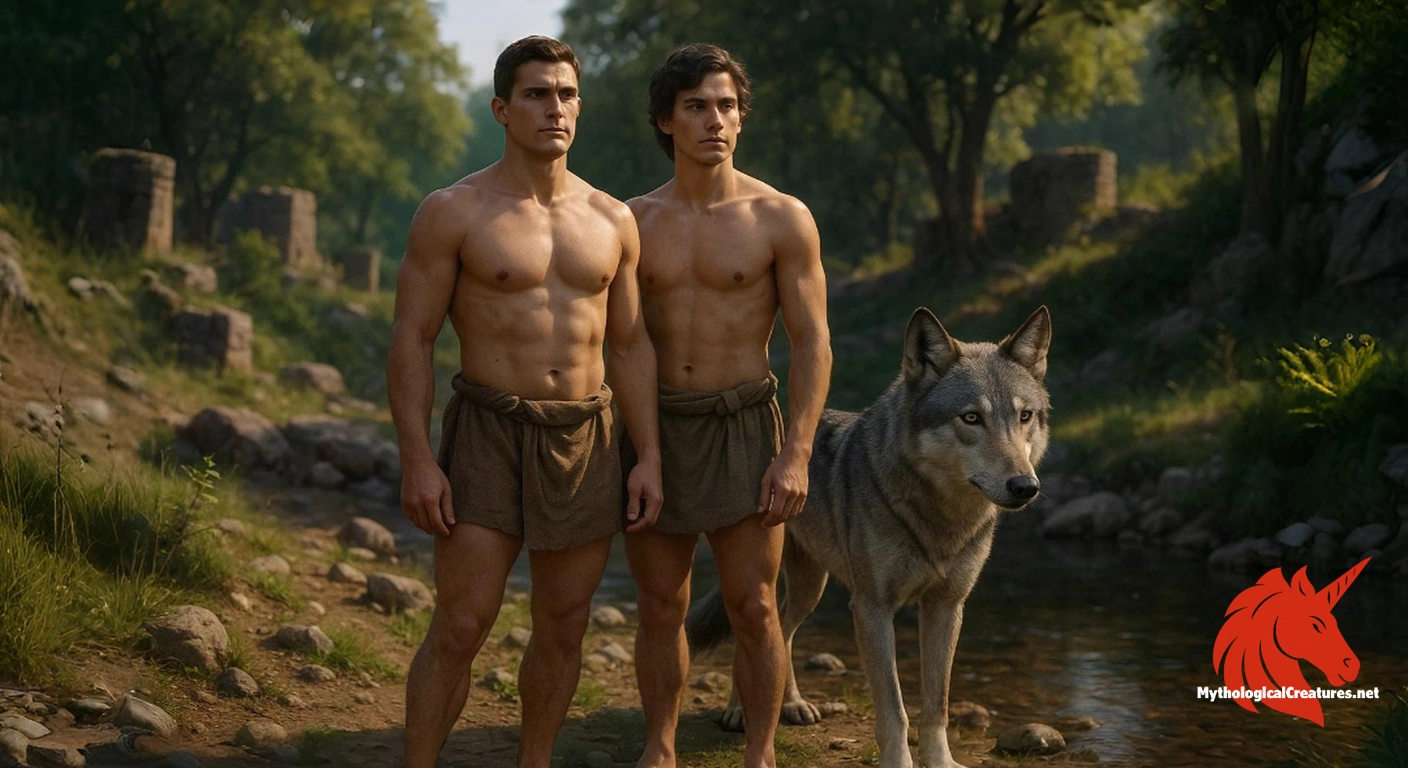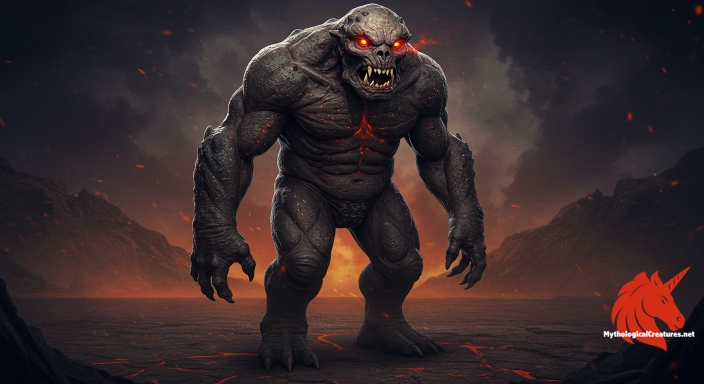Romulus and Remus: Romulus and Remus are the twin brothers celebrated in Roman mythology for founding the city of Rome.

Romulus and Remus
Romulus and Remus - Their myth represents the divine origin and destined rise of Rome, embodying themes of struggle, resilience, and ambition.
Origins & First Encounters
The legend of Romulus and Remus has long captivated the imagination as it intertwines divine intervention with the raw determination of mortal heroes. Emerging as twin sons of Rhea Silvia and the god Mars, they occupy a central role in the narrative of Rome’s origins, embodying both celestial favour and human resilience. Abandoned along the banks of the Tiber and then tenderly cared for by a she-wolf, their early existence symbolises survival against insurmountable odds. Their story, steeped in both mystery and purpose, is often seen as a blueprint for the ethos that would come to define Roman identity. Although the myth situates their adventures before Rome’s founding around 750 BC, the earliest written attestations date back to the late 3rd century BC. With an intricate tapestry woven from elements of divine destiny and heroic endeavour, the narrative quickly became a pillar of Roman cultural pride. The twin brothers’ journey from vulnerable infants to founders of a mighty city captures the spirit of transformation inherent in many founding myths. Over the centuries, their tale has provided a narrative framework for interpreting human fate, leadership, and the cost of ambition.
Source Texts & Tale Variants
Ancient literary sources provide the backbone of the Romulus and Remus narrative, with historians like Livy and Dionysius of Halicarnassus offering detailed accounts that have shaped its enduring legacy. The poetic embellishments of Virgil further enhanced the myth, infusing it with rich symbolism that highlights both the divinity and the tragedy inherent in the twins’ story. Beyond the literary records, archaeological finds such as the iconic bronze she-wolf have lent tangible evidence to the myth, reinforcing its cultural significance. Variants of the tale appear in multiple texts, each adjusting details to reflect contemporary political, social, or religious ideals. In some versions, the emphasis shifts towards the divine intervention that nurtured the twins, while others focus on the inevitability of their fated conflict. These multiple layers of narrative attest to the story's flexibility in serving as a unifying myth for the Roman state. As time progressed, later retellings continued to reinterpret the characters, enriching the narrative with nuances that responded to evolving cultural sensibilities. Despite the shifts in emphasis across different sources, the enduring elements of divine parentage, abandonment, and fraternal rivalry remain constant, offering scholars a multifaceted view of early Roman ideology.
Form & Powers
While ancient texts offer only modest descriptions of their physical features, later artistic depictions have imbued Romulus and Remus with a heroic, almost larger-than-life quality. Representations in sculpture and painting typically portray them as robust and well-proportioned young men, their features carved and rendered to reflect both strength and youthful determination. Often, their countenances display a noble austerity, suggesting a blend of earthly courage with the extraordinary heritage of divine descent. In many images, subtle differences in facial expression hint at the inner complexities of their destined rivalry, with Romulus frequently depicted as the more assertive figure and Remus as contemplative yet valiant. Their robust physiques and dynamic stances in art resonate with the Roman ideals of martial prowess and civic responsibility. The nurturing presence of the she-wolf in these depictions further accentuates their wild beginnings, contrasting animal instinct with human aspiration. As artistic styles evolved, their portrayals varied from the gritty realism of early Roman art to the idealised forms found during the Renaissance. These physical representations not only capture their legendary demeanour but also serve as cultural icons that have immortalised their image through the ages.
Regional Faces
The tale of Romulus and Remus has been reshaped by regional influences, each adding its own flavour to the core myth as it spread throughout Italy and beyond. In Rome, the narrative has been closely tied to the civic identity of the city, embodying the values of resilience and the divine right to rule. In contrast, neighbouring cultures sometimes reinterpreted the twins’ origins to align their own local traditions and deities with the widely known story. For instance, certain Etruscan variations introduce elements that meld indigenous rituals with the grand Roman narrative, thereby reinforcing regional pride. Across different parts of the Italian peninsula, subtle changes in the way the twins are portrayed—whether emphasising their heroic traits or highlighting the tragedy of fraternal conflict—demonstrate how myths can be tailored to reflect local aspirations. Regional festivals and public monuments have occasionally adapted the story to resonate with local cultural narratives, further cementing its place in communal memory. Even as the myth spread during later historical periods, each locale maintained a distinctive take on the narrative, contributing to a mosaic of interpretations within the broader classical tradition. Such regional adaptations underscore the flexible nature of myth-making, where local traditions and identities can reinterpret universal themes in uniquely compelling ways.
Cultural Parallels
The narrative of Romulus and Remus stands shoulder to shoulder with a host of other twin or founding figures in world mythology. In many cultures, twins have been portrayed as markers of duality, conflict, and cooperation—an idea that is equally resonant in the Roman legend. Similar to the celebrated Dioscuri of Greek mythology, who embodied both protective and martial qualities, Romulus and Remus are depicted as figures endowed with a divine spark that sets them apart from ordinary men. Their story of survival, struggle, and eventual triumph mirrors narratives found in other ancient cultures where birth under extraordinary circumstances heralds a destined greatness. The fraternal conflict that leads to the eventual sole rule of Romulus introduces themes of sacrifice and the harsh realities of leadership, concepts that are mirrored, albeit in different contexts, in dualistic myths from regions spanning the Mediterranean to the Near East. This motif of rivalry between divine or semi-divine twins often symbolises the broader human conflicts between order and chaos, light and shadow, ambition and restraint. The comparative analysis also reveals a common cultural thread: the fascination with the interplay between fate and free will, which these myths articulate through a blend of heroism and tragedy. As such, the myth of the twin founders provides a profound insight into the universal patterns of human storytelling, bridging diverse cultural traditions with shared existential themes.
Legacy & Modern Evolution
Over the centuries, the myth of Romulus and Remus has undergone significant evolution, reflecting shifts in artistic interpretation, political power, and cultural identity. Originally a powerful myth to explain the origins of Rome, their story has been elevated to a symbol of national pride and the indomitable spirit of civilisational renewal. The iconic image of the she-wolf nurturing the twins continues to be a potent emblem, used extensively in public art, coins, and state iconography throughout Italian history. Renaissance artists revitalised the narrative with renewed vigour, imbuing it with a humanistic spirit that celebrated both the grandeur of Rome and the complexity of individual identity. In modern times, the myth has transcended literary and historical boundaries, playing a crucial role in cinema, popular culture, and even political symbolism, where themes of unity and the struggle for greatness resonate strongly. Contemporary reinterpretations have also re-examined the darker aspects of the tale, particularly the fratricide that underscores the challenges of power and legitimacy. Academic debates continue to explore the historical kernels embedded within the myth, probing the balance between recorded history and mythological embellishment. Today, Romulus and Remus stand not only as legendary founders but also as enduring cultural icons whose legacy inspires reflections on the nature of identity, destiny, and the monumental task of founding a civilisation.
Interesting Fact
An intriguing aspect of their legend is the duality of their roles as both nurturing figures raised by a wolf and as tragic heroes whose internal conflict ultimately led to Rome's establishment.
Quick Creature Info
Origin:
Features:
Associations:
Our Mythic Legendary Rating:

Also Sometimes Known As:
Habitat:
Physical Attributes:
Abilities:
Behavior:
Weaknesses:
Lore:
References
Discover Another Mythical Legend You May Not Have Heard Of?
Uncover the mysteries of ancient folklore and expand your knowledge of legendary beings from cultures around the world.
Dare to Meet the Gallu....
Curated by the Mythological Creatures Team (rev. May 2025)
